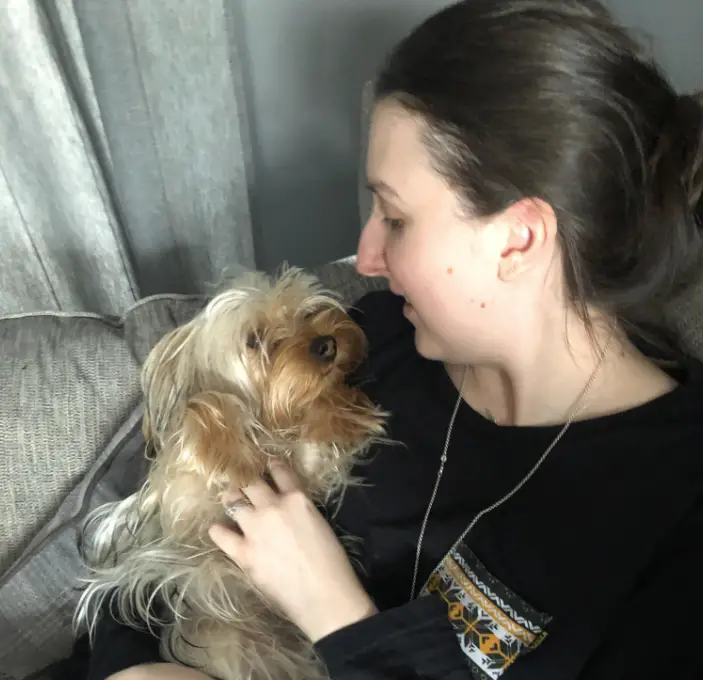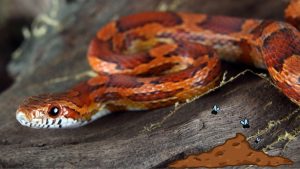Expert Guidelines for Optimal Feline Nutrition
Feeding your cat the right amount of food is crucial for their overall health and well-being. But how much should you be feeding your feline friend? The answer to that question depends on a variety of factors, including their age, weight, and activity level. In this article, we’ll explore the basics of how much to feed a cat and provide tips for ensuring your cat gets the right amount of food to stay healthy.
Understanding your cat’s nutritional needs is the first step in determining how much to feed them. Cats are obligate carnivores, which means they need a diet that’s high in protein and low in carbohydrates. They also require certain vitamins and minerals, such as taurine and vitamin A, that are found in animal-based proteins. When choosing a cat food, look for one that meets the Association of American Feed Control Officials (AAFCO) guidelines for complete and balanced nutrition.
Factors that affect how much to feed a cat include their age, weight, and activity level. Kittens, for example, need more calories per pound of body weight than adult cats because they’re still growing. Senior cats, on the other hand, may need fewer calories because they’re less active. To determine how much to feed your cat, start with the feeding guidelines on the cat food package and adjust as needed based on your cat’s individual needs.
Key Takeaways
- Understanding your cat’s nutritional needs is crucial for determining how much to feed them.
- Factors that affect how much to feed a cat include their age, weight, and activity level.
- To ensure your cat gets the right amount of food, start with the feeding guidelines on the cat food package and adjust as needed based on your cat’s individual needs.
Understanding Your Cat’s Nutritional Needs
As a responsible cat owner, it is important to understand your cat’s nutritional needs to ensure they are getting the right amount of food to maintain a healthy weight and lifestyle. Here are some important factors to consider when feeding your cat.
Life Stages
Cats have different nutritional needs at different stages of their life. Kittens require more calories and protein for growth and development, while senior cats may require a lower calorie diet to maintain a healthy weight. Adult cats require a balanced diet with the right amount of protein, fat, and carbohydrates to support their daily activities. It is important to choose a high-quality kitten food for growing kittens and a complete and balanced adult cat food for adult cats.
Indoor vs Outdoor Cats
Indoor cats may require fewer calories than outdoor cats since they are less active. However, they may also require more fiber to prevent hairballs and maintain healthy digestion. Outdoor cats may require more calories and protein to support their active lifestyle. It is important to adjust your cat’s diet based on their activity level and lifestyle.
Health Conditions
If your cat has a health condition such as urinary tract issues or diabetes mellitus, they may require a special diet. Consult with your veterinarian to determine the best diet for your cat’s specific health needs.
When choosing a cat food, look for a high-quality food that is complete and balanced with animal-based protein. Wet food, dry food, or a combination of both can be used to meet your cat’s nutritional needs. Grain-free diets may not be necessary for all cats, but some cats may benefit from a grain-free diet if they have a grain sensitivity or allergy.
Protein is an important component of your cat’s diet, and it is important to choose a high-quality protein source with all the essential amino acids. Canned wet food can be a good source of moisture for cats who do not drink enough water, while dry kibble can help maintain dental health.
In summary, understanding your cat’s nutritional needs is important for maintaining their overall health and wellbeing. Consider their life stage, activity level, and any health conditions when choosing a high-quality cat food that is complete and balanced to meet their dietary needs.
How Much to Feed a Cat: The Basics
Feeding your cat the right amount of food is essential to maintain their health and wellbeing. Overfeeding or underfeeding can lead to obesity, malnutrition, and other health problems. This section will cover the basics of how much to feed a cat, including feeding guidelines, calculating daily amounts, and using a feeding chart.
Feeding Guidelines
The amount of food your cat needs depends on several factors, including their age, weight, activity level, and overall health. As a general rule, adult cats should be fed twice a day, while kittens may need to be fed more frequently.
Most cat food manufacturers provide feeding guidelines on the packaging, but these are just estimates. You should also consider your cat’s individual needs and adjust their food intake accordingly.
Calculating Daily Amounts
To calculate your cat’s daily food intake, you first need to determine their daily calorie needs. This can be done using a simple formula based on their weight and activity level.
For example, a sedentary 10-pound cat may only need around 180-200 calories per day, while a more active cat of the same weight may need up to 300 calories per day.
Once you have determined your cat’s daily calorie needs, you can use this information to calculate the amount of food they need each day. This will vary depending on the calorie content of the food you are feeding them, so be sure to check the packaging for this information.
Feeding Chart
A feeding chart can be a helpful tool for ensuring that your cat is getting the right amount of food. This chart should include your cat’s daily calorie needs, the calorie content of the food you are feeding them, and the amount of food they need each day.
You can also use this chart to monitor your cat’s weight and adjust their food intake as needed. If your cat is gaining weight, you may need to reduce their food intake, while if they are losing weight, you may need to increase it.
Remember, feeding your cat the right amount of food is crucial for their health and wellbeing. By following these feeding guidelines, calculating daily amounts, and using a feeding chart, you can ensure that your cat is getting the nutrition they need to live a happy and healthy life.
Factors That Affect How Much to Feed a Cat
When it comes to feeding your cat, there are several factors that can influence how much food they need. It is important to take these factors into consideration to ensure that your cat is receiving the appropriate amount of food to maintain a healthy weight and lifestyle. Here are some of the main factors that can affect how much to feed your cat.
Activity Level
The activity level of your cat is an important factor to consider when determining how much food they need. If your cat is very active and spends a lot of time running around and playing, they will require more calories than a cat that is less active. On the other hand, if your cat is more sedentary and spends most of their time sleeping, they will require fewer calories.
Body Type and Condition
Another factor to consider is your cat’s body type and condition. Some cats are naturally smaller or larger than others, and this can affect how much food they need. It is important to monitor your cat’s body condition score to ensure that they are at a healthy weight. If your cat is overweight or obese, they will require fewer calories to help them lose weight.
Eating Habits
Your cat’s eating habits can also influence how much food they need. Some cats are grazers and prefer to eat small amounts of food throughout the day, while others prefer to eat larger meals. It is important to take your cat’s eating habits into consideration when determining how much to feed them.
Overall, it is important to work with your veterinarian to determine the appropriate amount of food to feed your cat based on their individual needs. By considering factors such as activity level, body type and condition, and eating habits, you can help ensure that your cat is receiving the appropriate amount of food to maintain a healthy weight and lifestyle.
Feeding Your Kitten
If you’re a new kitten owner, you might be wondering how much to feed your kitten and how often. Feeding your kitten is an important part of keeping them healthy and happy. In this section, we’ll cover the basics of feeding your kitten, including kitten food, feeding instructions, and recommended amounts.
Kitten Food
Kittens have specific nutritional needs that differ from adult cats. It’s important to feed your kitten high-quality kitten food that is specifically designed for kittens. Kitten food should contain high levels of protein and fat to support their growth and development. Look for kitten food that is labeled as “complete and balanced” to ensure that your kitten is getting all of the nutrients they need.
Feeding Instructions
When you first bring your kitten home, they will likely need to be fed small meals throughout the day. As they grow, you can gradually decrease the number of meals and increase the amount of food at each meal. Most kittens can be fed a combination of wet and dry food. Wet food can be fed as a supplement to dry food or as a standalone meal. It’s important to provide your kitten with fresh water at all times.
Recommended Amount
The amount of food your kitten needs will depend on their age, weight, and activity level. As a general rule, kittens should be fed about three to four times a day. You can use the feeding instructions on the kitten food packaging as a starting point, but it’s important to monitor your kitten’s weight and adjust their food intake as needed. Overfeeding your kitten can lead to obesity and health problems later in life.
In conclusion, feeding your kitten high-quality kitten food and providing them with fresh water is essential for their growth and development. Follow the feeding instructions on the kitten food packaging and monitor your kitten’s weight to ensure that they are getting the right amount of food. With proper nutrition and care, your kitten will grow up healthy and happy.
Feeding Your Senior Cat
As cats age, their nutritional needs change, and it becomes essential to adjust their feeding routine accordingly. Here are some things to keep in mind when feeding your senior cat.
Senior Cat Nutritional Needs
Senior cats require a diet that is lower in calories and fat and higher in protein to maintain muscle mass. According to VCA Animal Hospital, most senior cat diets are formulated with appropriate nutrient limits and are less calorie-dense than rations for kittens and young adults. However, there are currently no established specific nutrient requirements, meaning that amounts of nutrients found in different foods can vary widely.
Feeding Routine
It is essential to establish a feeding routine for senior cats and stick to it. Feed your cat at the same time every day, and avoid feeding them table scraps or human food that can upset their stomach. According to Chewy, most senior cats will have about the same caloric needs as an adult cat, roughly 280 to 360 daily calories depending on the normal lean weight, as long as they are healthy. Some older cats will actually have an increase in energy requirements, so it is important to consult with your veterinarian to determine the appropriate amount of food to feed your senior cat.
Underlying Medical Issues
Senior cats may have underlying medical issues that affect their appetite and dietary needs. Arthritis, dental problems, and kidney disease are common issues that can affect a senior cat’s ability to eat. If your cat has undergone surgery or has a chronic illness, it may require a specialized diet. According to WebMD, if your cat is not eating, it is essential to consult with your veterinarian to determine the underlying cause and develop a treatment plan.
In conclusion, feeding your senior cat requires careful consideration of their nutritional needs, feeding routine, and underlying medical issues. By working with your veterinarian and providing your senior cat with a well-balanced diet, you can help ensure their overall health and well-being.
Tips for Feeding Your Cat
When it comes to feeding your cat, there are a few things to keep in mind to ensure they are getting the right amount of nutrients and staying healthy. Here are some tips to help you create a feeding routine that works for you and your feline friend.
Multiple Smaller Meals
Cats are natural grazers, so feeding them multiple smaller meals throughout the day is generally better than giving them one large meal. This can help prevent overeating, which can lead to obesity and other health issues. As a general rule, it’s recommended to feed your cat at least two meals a day, about 12 hours apart. However, some cats may prefer more frequent, smaller meals.
Moisture and Hydration
Cats are notorious for not drinking enough water, which can lead to dehydration and other health problems. One way to ensure your cat is getting enough moisture is to feed them wet food. Wet food has a higher water content than dry food, which can help keep your cat hydrated. If you do choose to feed your cat dry food, make sure they have access to fresh water at all times.
Treats
Treats can be a great way to reward your cat and show them affection, but it’s important to give them in moderation. Too many treats can lead to obesity and other health problems. When choosing treats, look for ones that are specifically formulated for cats and are low in calories. You can also try giving your cat small pieces of cooked chicken or fish as a treat.
Overall, creating a feeding routine that works for you and your cat is important for their health and wellbeing. By following these tips, you can help ensure your cat is getting the right amount of nutrients and staying healthy.
Conclusion
Feeding your cat the right amount of food is crucial for maintaining their health and well-being. Overfeeding can lead to obesity and other health problems, while underfeeding can cause malnutrition and weight loss.
The amount of food your cat needs depends on several factors, including their age, weight, activity level, and overall health. As a general rule, adult cats require around 20 calories per pound of body weight per day, while kittens require more. However, it’s important to consult with your veterinarian to determine the appropriate amount of food for your cat’s specific needs.
When it comes to feeding your cat, it’s important to choose high-quality, balanced cat food that meets their nutritional needs. Avoid feeding your cat table scraps or human food, as this can lead to digestive problems and obesity.
In addition to the right amount of food, it’s also important to provide your cat with plenty of fresh water and exercise. Regular veterinary check-ups can also help ensure your cat is healthy and receiving the proper nutrition.
By following these guidelines and working with your veterinarian, you can help ensure your cat stays healthy and happy for years to come.
Frequently Asked Questions
How much food should a cat eat a day?
The amount of food a cat needs depends on various factors, such as age, weight, activity level, and overall health. As a general rule of thumb, adult cats need about 24-35 calories per pound of body weight per day. However, it’s always best to consult with your veterinarian to determine the exact amount of food your cat needs.
How much and how often should I feed my cat a day?
Cats are natural grazers, so it’s recommended to feed them small, frequent meals throughout the day rather than one or two large meals. As for how much to feed them, it’s best to follow the feeding guidelines on the cat food packaging or consult with your veterinarian for a personalized recommendation.
How much should I feed my 10 lb cat?
A 10 lb cat needs about 240-350 calories per day. However, the exact amount of food your cat needs may vary depending on their age, activity level, and overall health. It’s best to consult with your veterinarian to determine the exact amount of food your cat needs.
How much dry food and wet food should I feed my cat?
The amount of dry and wet food your cat needs depends on their individual needs. As a general guideline, dry food should make up no more than half of your cat’s daily caloric intake. Wet food can be given in addition to dry food, or on its own. It’s best to consult with your veterinarian for a personalized recommendation.
How much wet food to feed a cat calculator?
There are various online calculators that can help you determine how much wet food to feed your cat based on their weight, age, and activity level. However, it’s always best to consult with your veterinarian for a personalized recommendation.
How much dry food to feed a cat calculator?
There are various online calculators that can help you determine how much dry food to feed your cat based on their weight, age, and activity level. However, it’s always best to consult with your veterinarian for a personalized recommendation.
The amount of food a cat needs depends on various factors, such as age, weight, activity level, and overall health. As a general rule of thumb, adult cats need about 24-35 calories per pound of body weight per day. However, it’s always best to consult with your veterinarian to determine the exact amount of food your cat needs.
“}},{“@type”:”Question”,”name”:”How much and how often should I feed my cat a day?”,”acceptedAnswer”:{“@type”:”Answer”,”text”:”
Cats are natural grazers, so it’s recommended to feed them small, frequent meals throughout the day rather than one or two large meals. As for how much to feed them, it’s best to follow the feeding guidelines on the cat food packaging or consult with your veterinarian for a personalized recommendation.
“}},{“@type”:”Question”,”name”:”How much should I feed my 10 lb cat?”,”acceptedAnswer”:{“@type”:”Answer”,”text”:”
A 10 lb cat needs about 240-350 calories per day. However, the exact amount of food your cat needs may vary depending on their age, activity level, and overall health. It’s best to consult with your veterinarian to determine the exact amount of food your cat needs.
“}},{“@type”:”Question”,”name”:”How much dry food and wet food should I feed my cat?”,”acceptedAnswer”:{“@type”:”Answer”,”text”:”
The amount of dry and wet food your cat needs depends on their individual needs. As a general guideline, dry food should make up no more than half of your cat’s daily caloric intake. Wet food can be given in addition to dry food, or on its own. It’s best to consult with your veterinarian for a personalized recommendation.
“}},{“@type”:”Question”,”name”:”How much wet food to feed a cat calculator?”,”acceptedAnswer”:{“@type”:”Answer”,”text”:”
There are various online calculators that can help you determine how much wet food to feed your cat based on their weight, age, and activity level. However, it’s always best to consult with your veterinarian for a personalized recommendation.
“}},{“@type”:”Question”,”name”:”How much dry food to feed a cat calculator?”,”acceptedAnswer”:{“@type”:”Answer”,”text”:”
There are various online calculators that can help you determine how much dry food to feed your cat based on their weight, age, and activity level. However, it’s always best to consult with your veterinarian for a personalized recommendation.
“}}]}
Author
-

Jess is a lifelong pet lover, known for her profound passion for animals. With a wide range of pets, from cats and dogs to fish and hamsters, she has experienced the joys and challenges of pet ownership firsthand. Her writing captures the unique bond between humans and pets, sharing heartwarming anecdotes and practical advice. Jess’s deep understanding of animal behavior and commitment to responsible pet care make her a valuable resource for fellow pet enthusiasts. Through her words, she continues to inspire and educate, fostering meaningful connections between humans and their beloved furry companions.









